When it comes to status in the gemstone world, the “Big Five” (diamonds, rubies, sapphires, emeralds, and paraiba tourmalines) along with jade and Hetian jade are undoubtedly the “old money” aristocrats, boasting long histories and widespread fame.
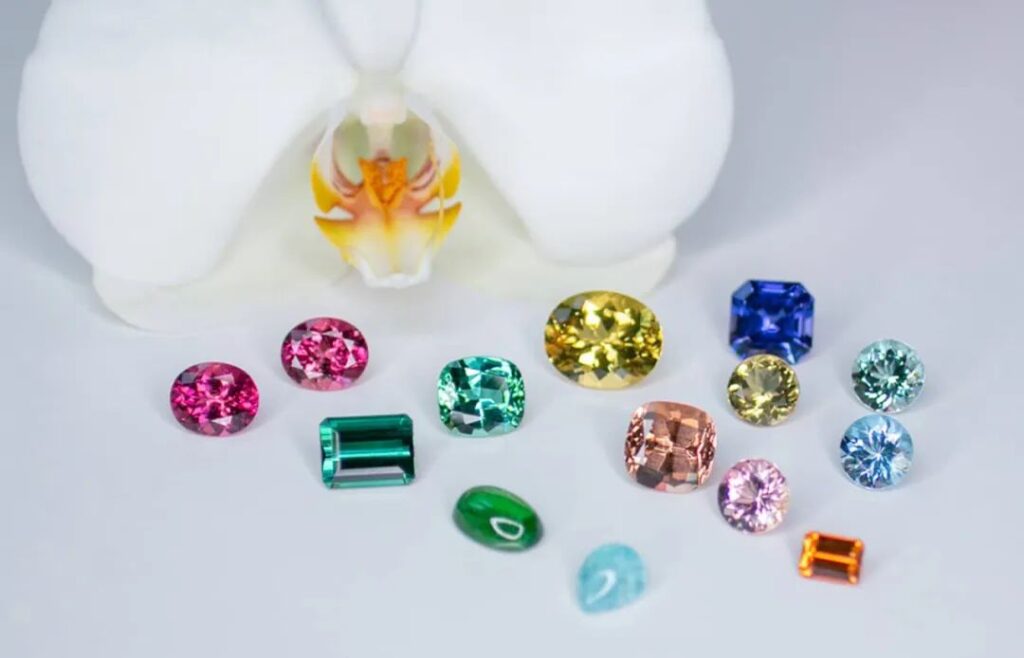
In the past two to three decades, as gem enthusiasts and collectors have diversified their aesthetic tastes, more and more people are turning their attention to newer or previously less popular gemstones, in addition to purchasing traditional “old money” stones. Some of these gemstones have seen their popularity and price increases far surpass others, with per-carat prices starting in the four-digit range, and even reaching five or six digits, thus becoming the “nouveau riche” of the gemstone world.
So, who are these gemstone “nouveau riche”?
Aquamarine
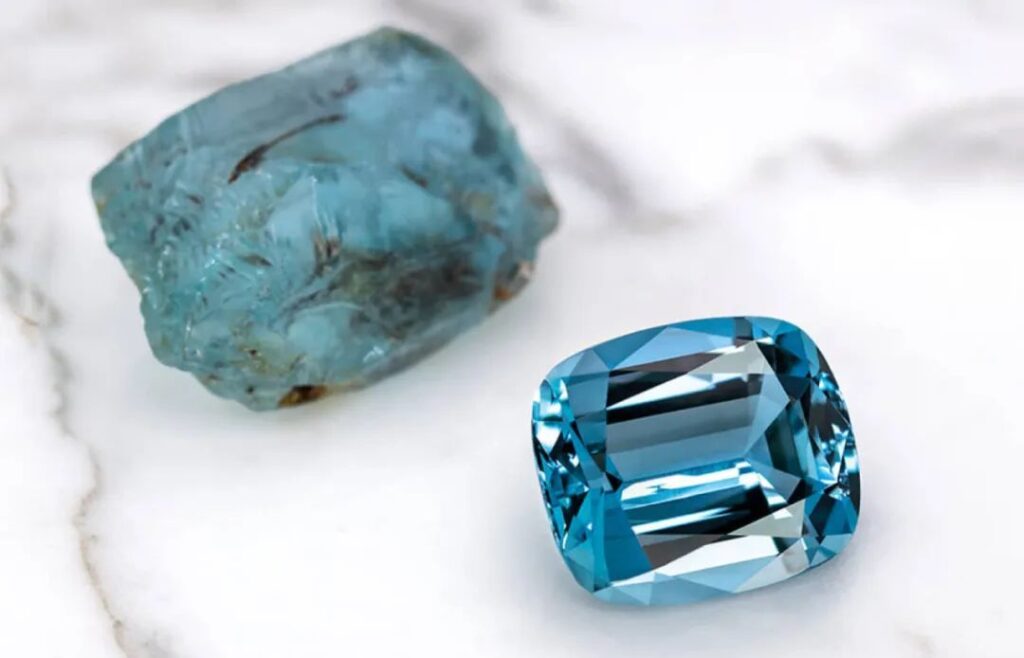
Aquamarine, the blue fairy of the beryl family, boasts a refreshingly elegant color, mostly ranging from greenish-blue to blue, reminiscent of the ocean’s soothing hues.

In recent years, aquamarine has been favored by both royalty and high-end fashion brands, solidifying its status as a “nouveau riche” in the colored gemstone market. A few years ago, its price even experienced a sharp increase in the Chinese gemstone market.
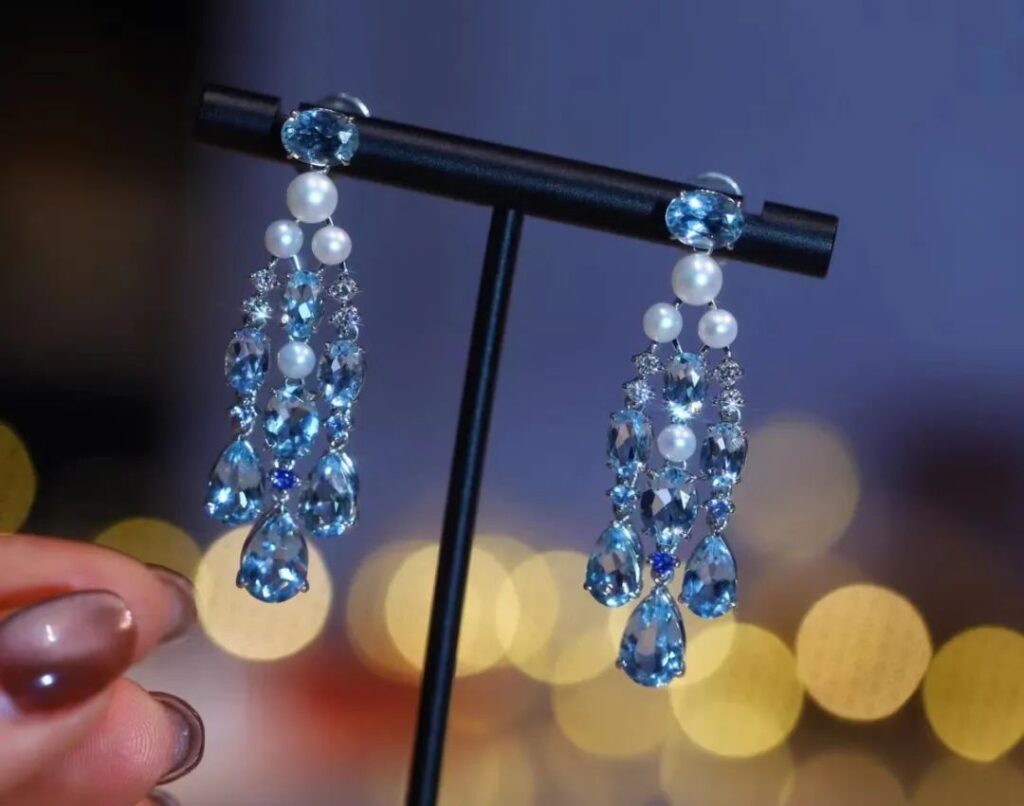
Among aquamarines, the Santa Maria color is renowned for its bright, brown (yellow)-free intense blue. Named after its origin in the Santa Maria de Itabira mine in Brazil, this color has become synonymous with high-quality aquamarine.

High-quality aquamarines command prices of four digits or more per carat.
Spessartite Garnet (Fanta Stone)
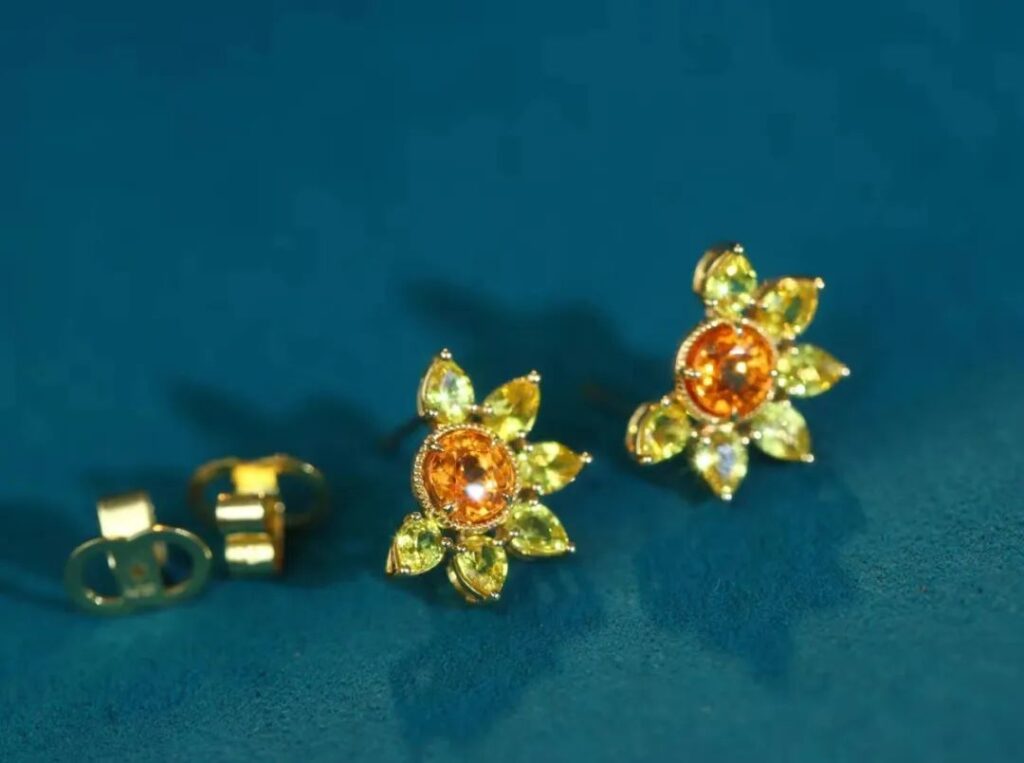
“Energy” is a term that has been frequently appearing online in recent years. Many netizens hope to gain external support to boost their spirits and regain energy, such as through lucky Buddha statues or gemstones. There’s one gemstone that instantly energizes people with its vibrant color at first glance – the spessartite garnet, also known as the Fanta stone.
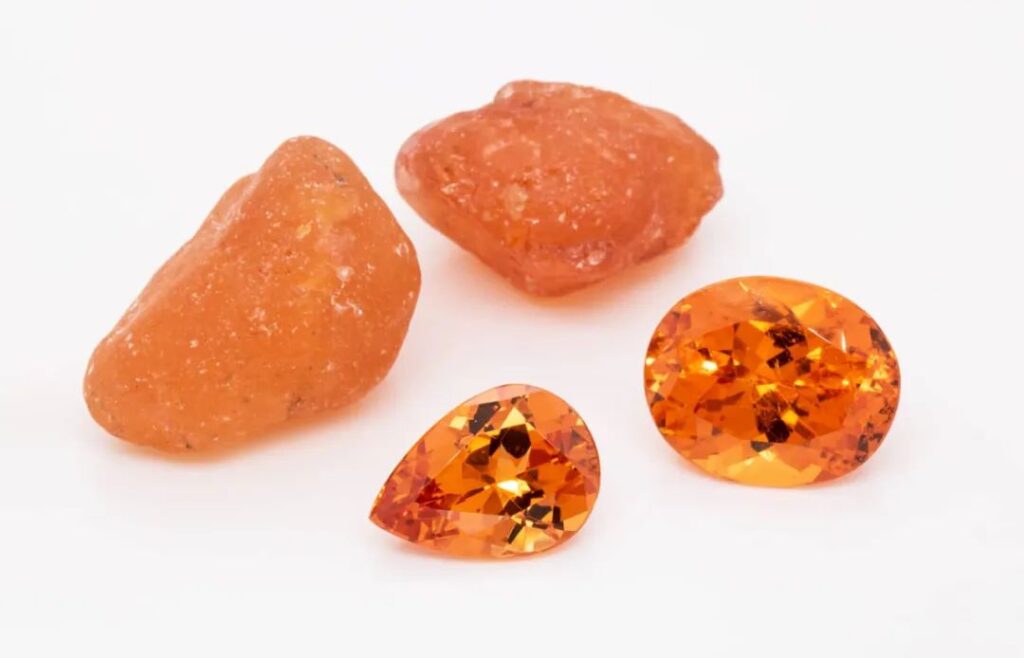
Spessartite garnet is a type of garnet composed of manganese aluminum. The gem-quality manganese aluminum garnet with a vivid orange-yellow color, free from brown tones, exudes a lively and passionate energy with a strong youthful vibe. Due to its color resemblance to Fanta soda, it earned the commercial name “Fanta stone.”
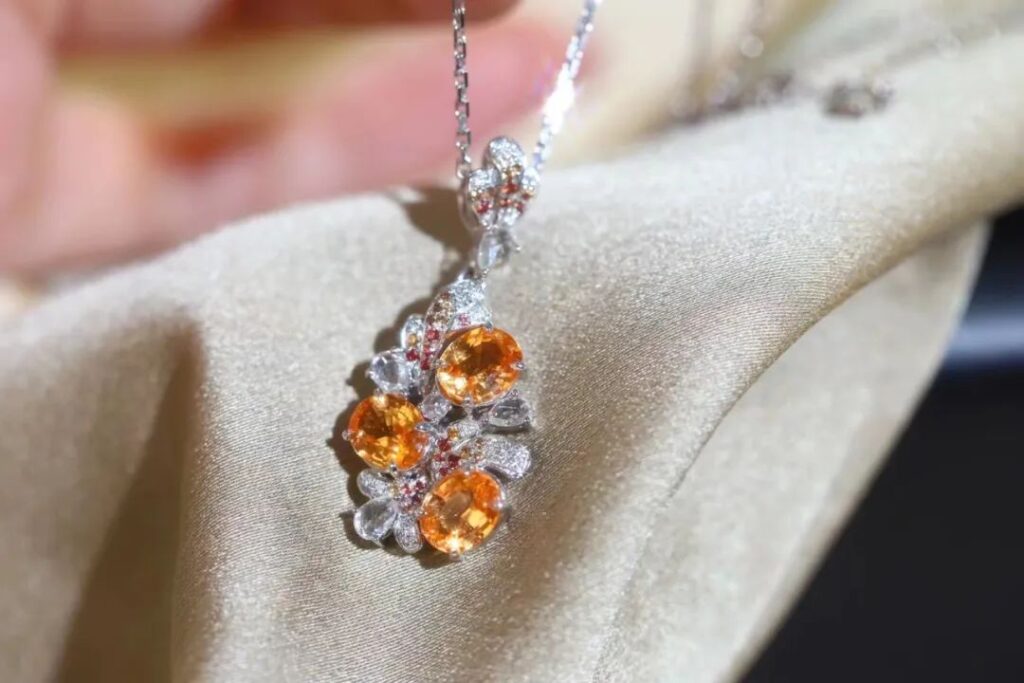
Fanta stones typically appear in light orange, orange, and orange-red hues, with the most popular being a bright golden-orange color reminiscent of a fresh orange. Besides its warm, bright color, the Fanta stone also emits eye-catching fire, full of vitality and energy. According to low-energy enthusiasts, the Fanta stone is like an instant energy boost, capable of fully recharging one’s spirits.
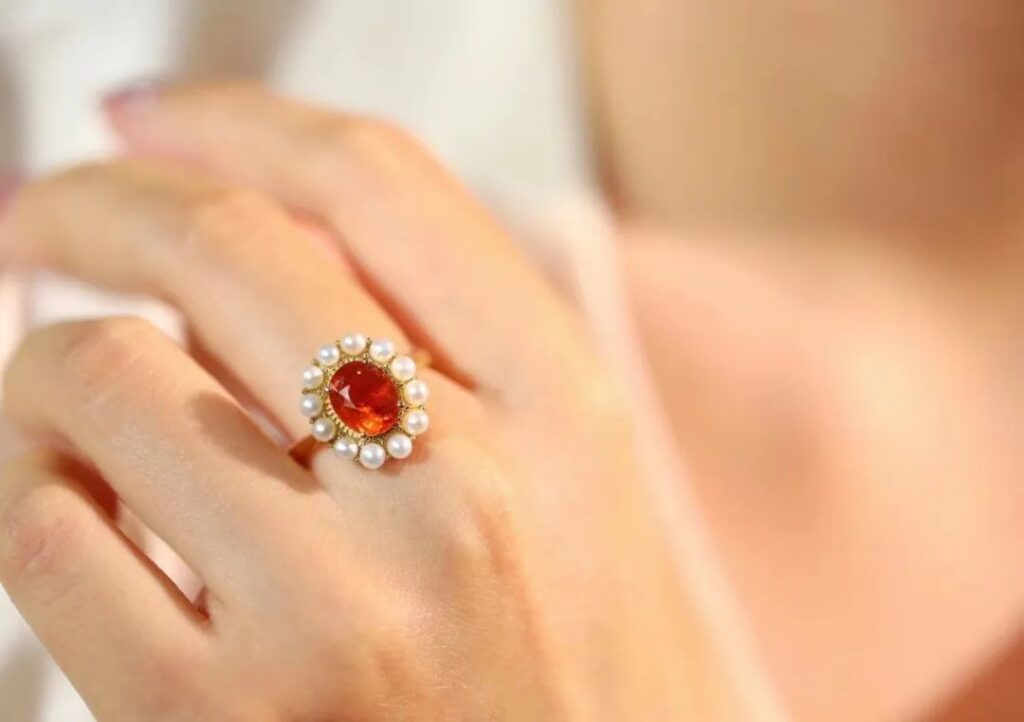
Although the Fanta stone was only discovered in the 1990s, it quickly gained fame due to its beauty. It has become a favorite among luxury brands and has been featured multiple times in haute couture designs. Its value has been steadily rising in recent years, solidifying its status as a true “nouveau riche” gemstone.
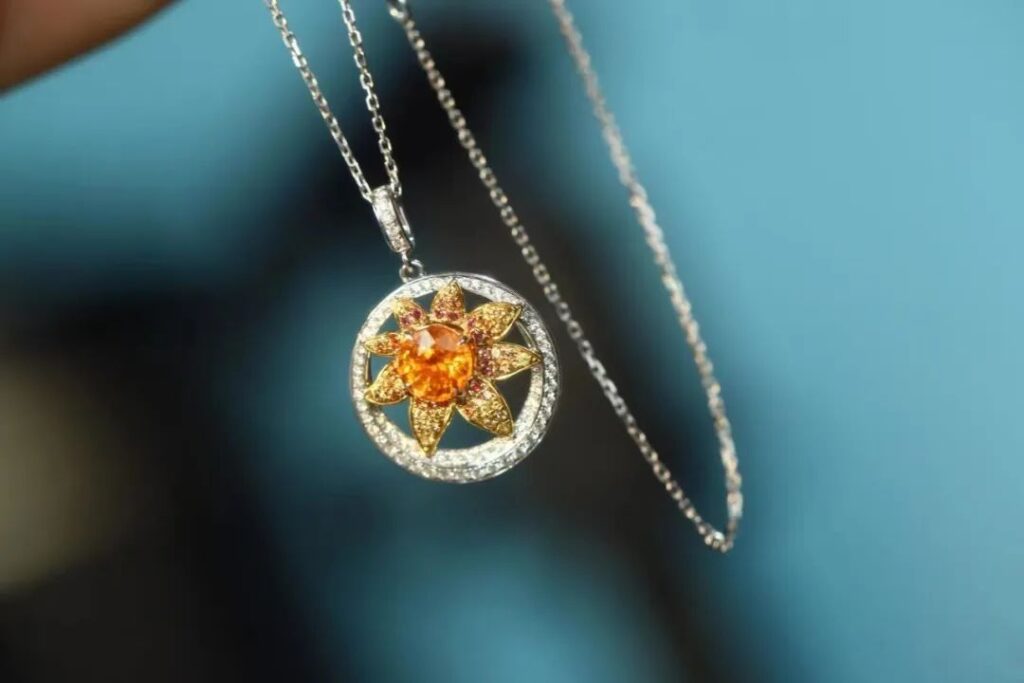
High-quality Fanta stones also command prices of four digits or more per carat.
Morganite
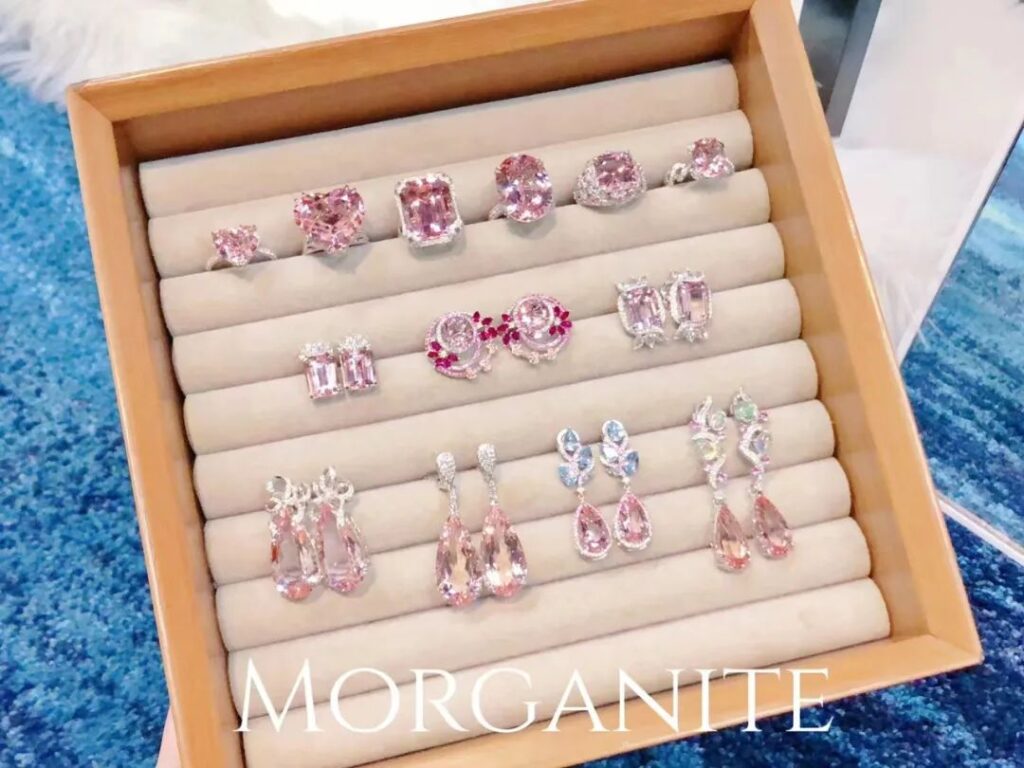
Morganite is a pink to orange-pink variety of beryl, displaying romantic hues reminiscent of fallen leaves or sunset skies. It was named after the renowned financier J.P. Morgan.
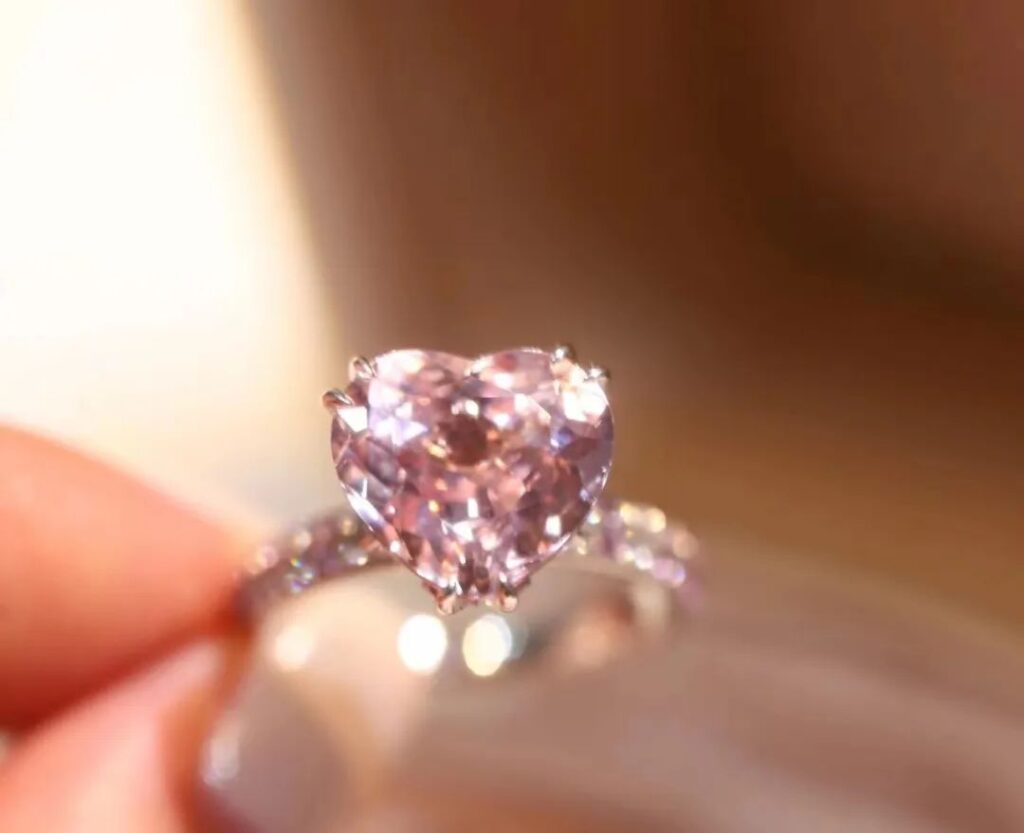
The character of morganite matches its color – gentle and unassuming. It’s believed to enhance personal charm and improve interpersonal relationships, earning it the nickname “the stone of relationships.” Since its discovery in 1910, morganite has maintained high popularity over the past century, with many couples choosing it as an affordable gemstone for engagement rings.
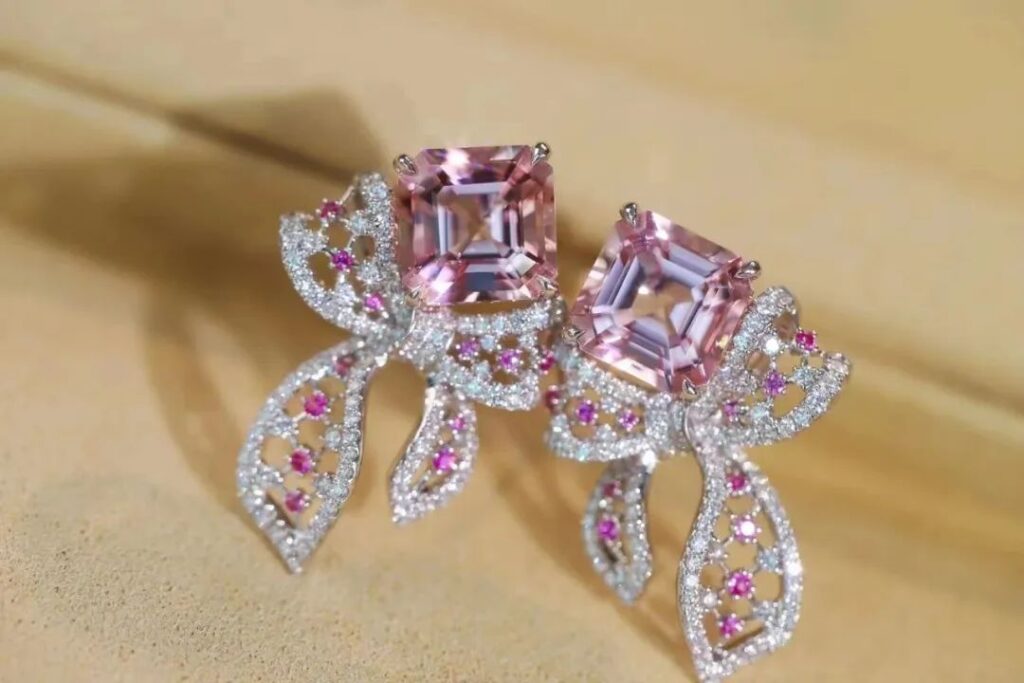
The most popular colors of morganite lean towards cherry blossom pink and sunset orange-pink. However, most natural morganites have relatively pale colors. Nearly all morganites on the market today have undergone heat treatment to produce or enhance their pink color.

Like the previous two gemstones, high-quality morganite commands prices of four digits or more per carat.
Spinel
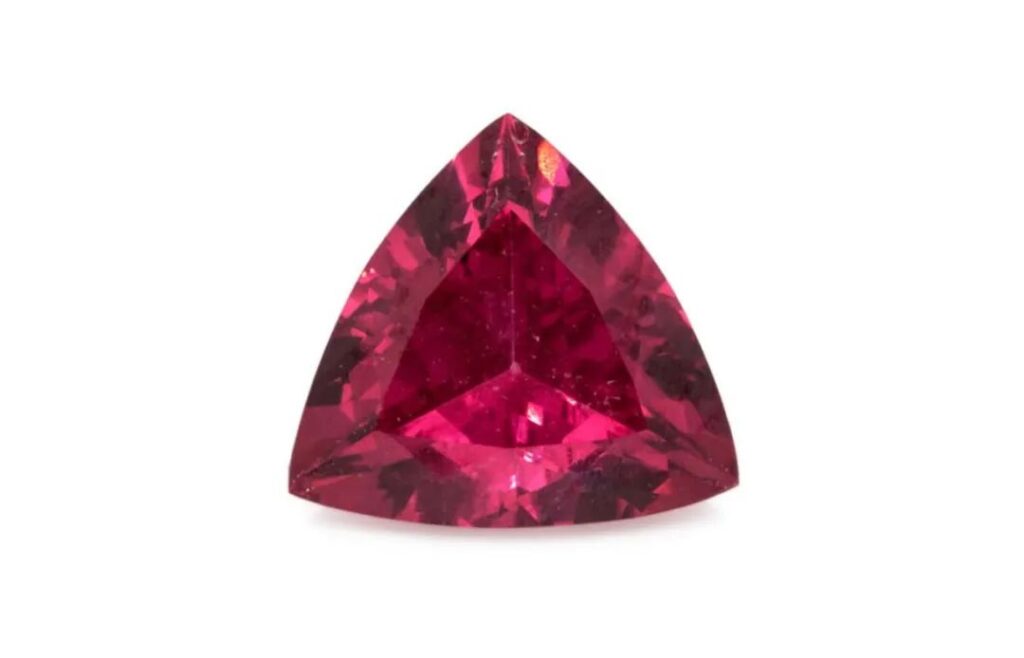
Although red spinel was discovered thousands of years ago, its beauty, easily confused with ruby, led to it being used as ruby for centuries.

It wasn’t until the development of modern gemology that those “rubies” adorning ancient crowns were discovered to be spinels. The world was astonished by their stunning beauty. Since then, spinel has flourished in the gemstone world under its true identity and name. Talk about a case of mistaken identity!
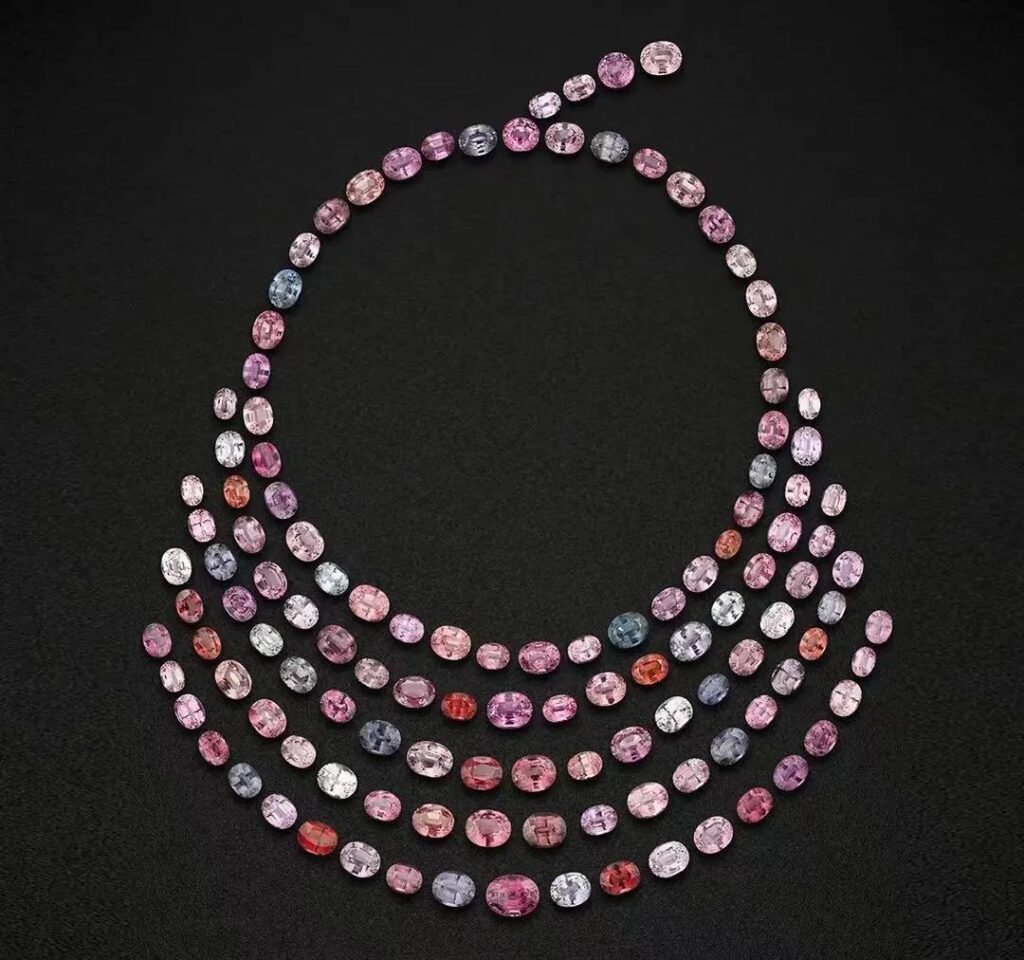
Besides the ruby-rivaling red color, spinels come in hot pink, orange, blue, purple, and black hues, resembling a rainbow in the sky. The most popular and expensive varieties are the “Jedi” spinel and the Mahenge hot pink spinel.
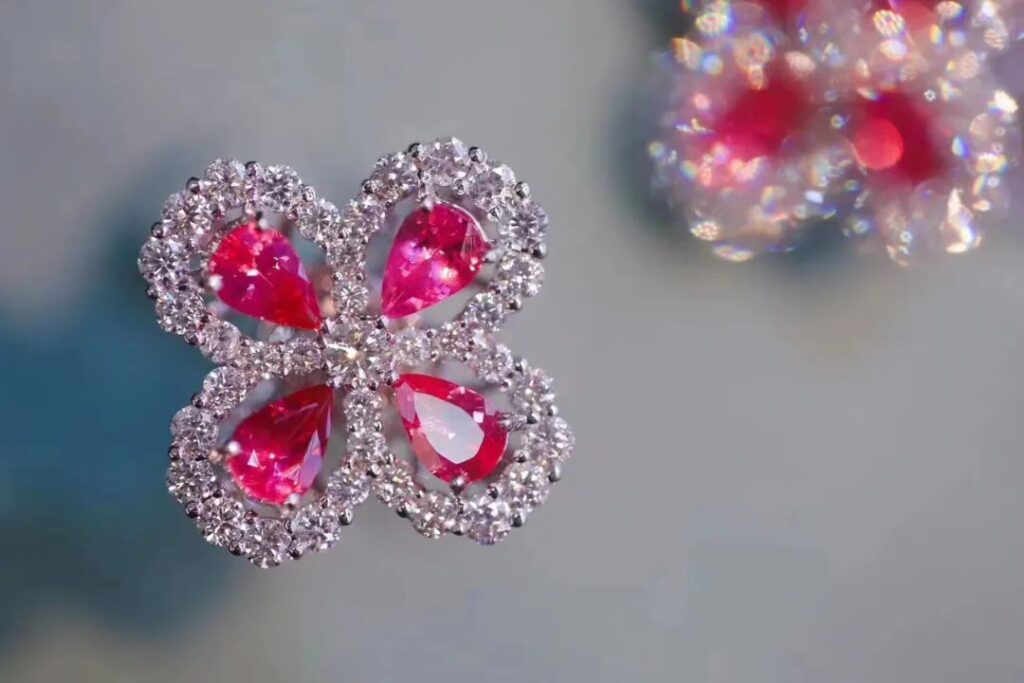
Spinel not only boasts a diverse color palette but also exhibits brilliant fire and strong luster. These characteristics have made spinel highly sought after, elevating it to one of the most valuable colored gemstones outside the “Big Five.”

The exceptional beauty of spinel has made it one of the most valuable colored gemstones outside the “Big Five.”
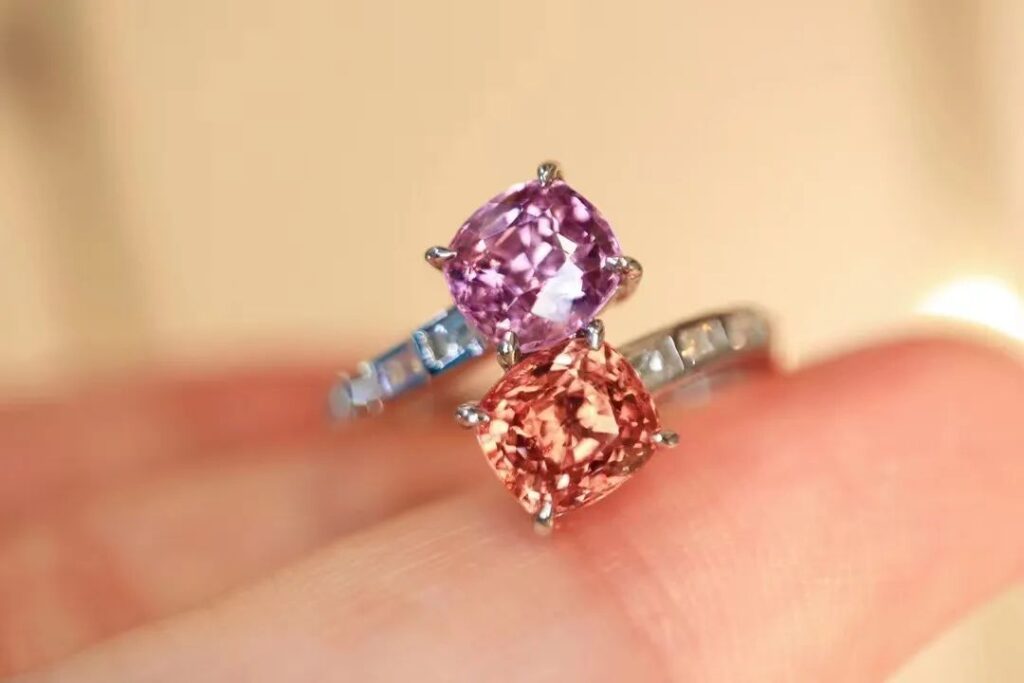
High-quality Burmese “Jedi” spinels start at five-digit prices per carat. For top-grade “Jedi” spinels from Myanmar’s Namya mine, prices starting at 100,000 yuan per carat are not uncommon.
Tsavorite
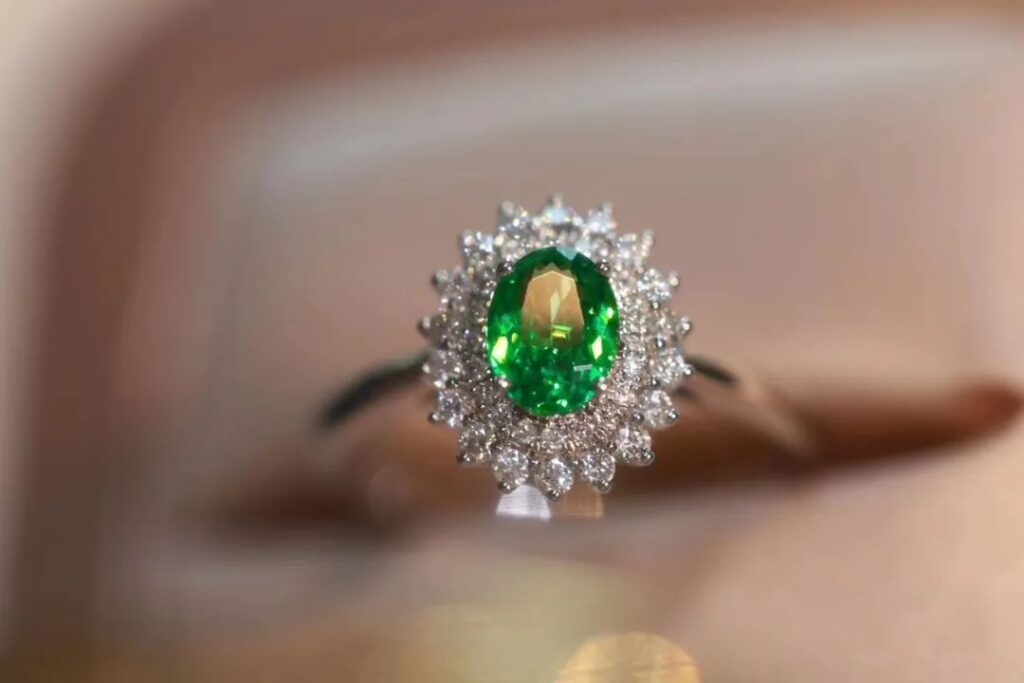
In 1961, renowned geologist Campbell Bridges, while evading a charging buffalo, jumped into a shallow stream. There, he caught a glimpse of green – as fresh and vibrant as leaves on a summer morning. This green gem turned out to be tsavorite.
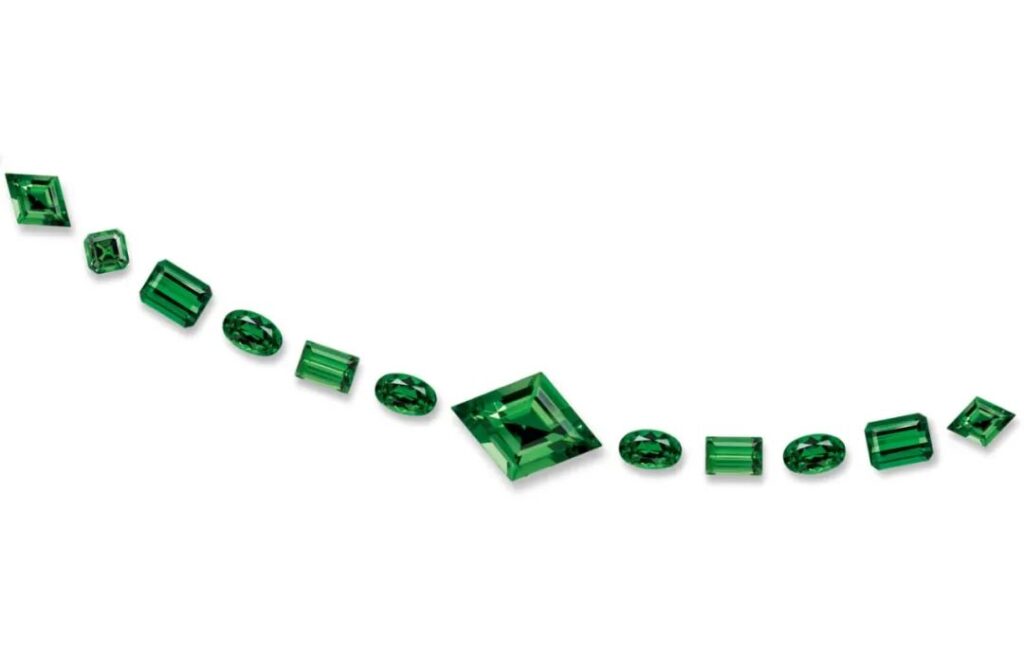
Tsavorite is a type of garnet that displays a rich, verdant green color due to trace mineral elements. Its beauty is further enhanced by its exceptionally high clarity and brilliance, satisfying the demands of both color enthusiasts and clarity-obsessed gem lovers. Since its discovery, tsavorite has captured significant attention in the gemstone world, becoming one of the most popular green gemstones.
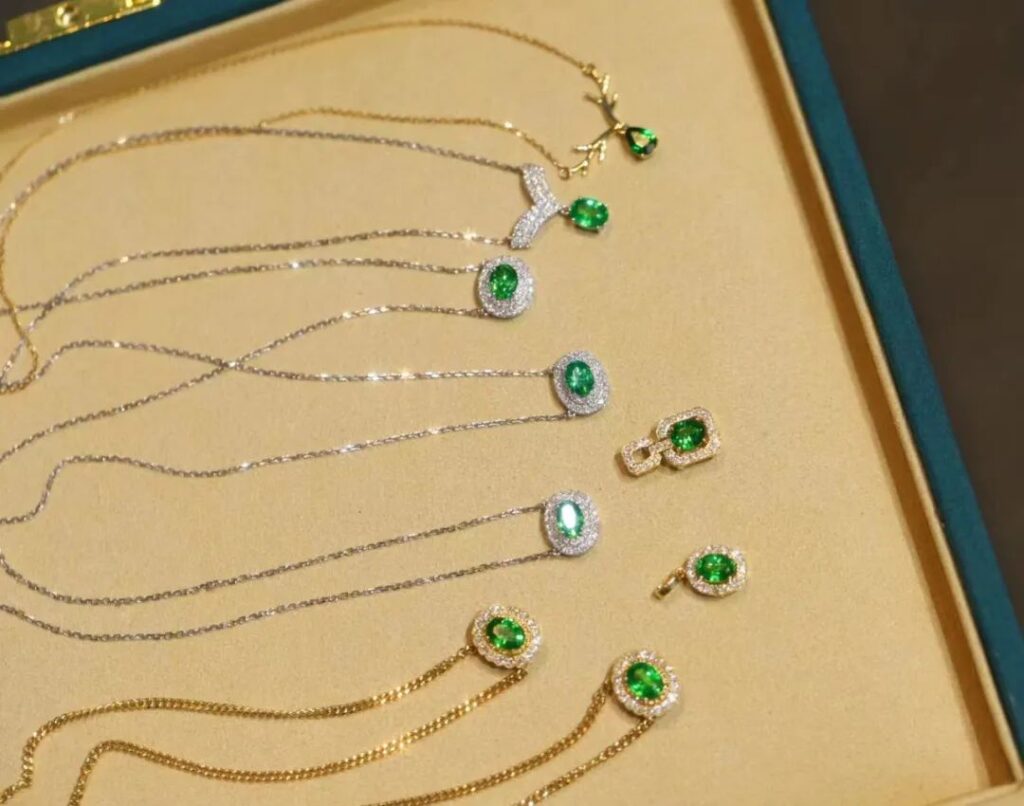
High-quality tsavorites in smaller sizes start at four-digit prices per carat, sometimes reaching five digits. For larger stones, prices can easily reach five digits per carat.
Tanzanite
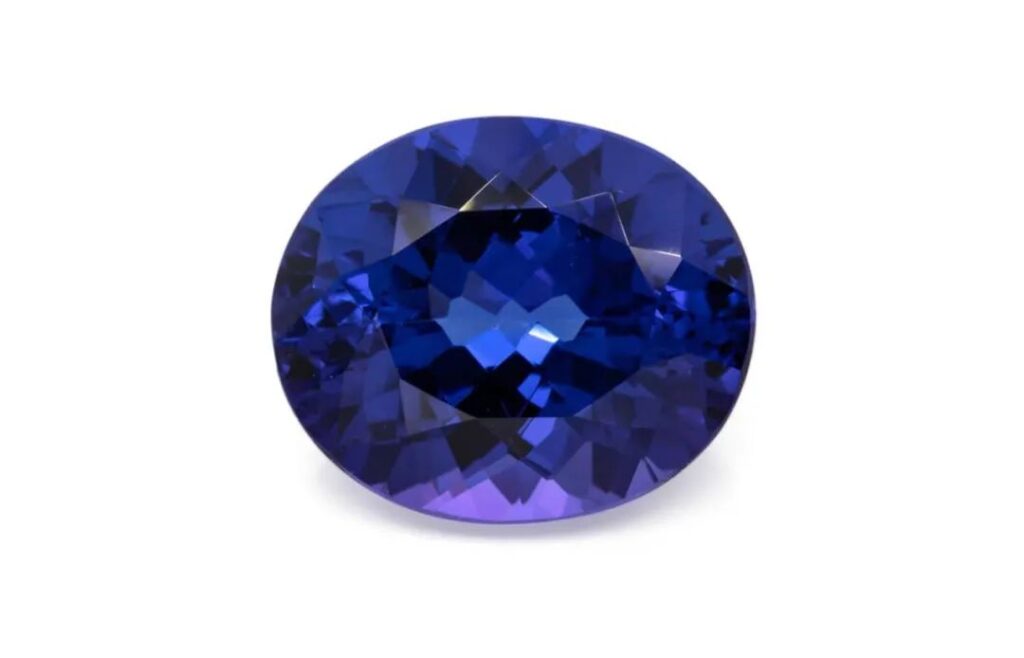
Tanzanite was discovered in the 1960s in the Merelani Hills near Mount Kilimanjaro in Tanzania. Tiffany & Co. named it after its country of origin. Its deep, ocean-like blue, known as tanzanite blue, has been poetically described as the “blue of the century.”
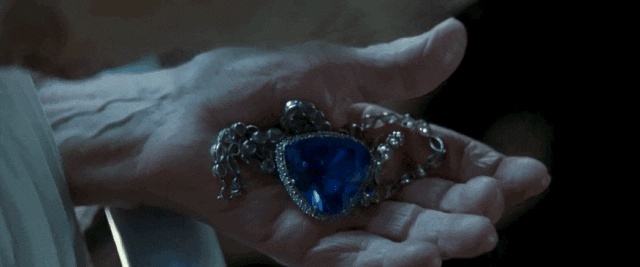
When discussing tanzanite’s rise to fame, one cannot ignore the famous film “Titanic.” Although it gained notoriety under the guise of the “Heart of the Ocean,” tanzanite has firmly established itself in the gemstone world based on its unique beauty.
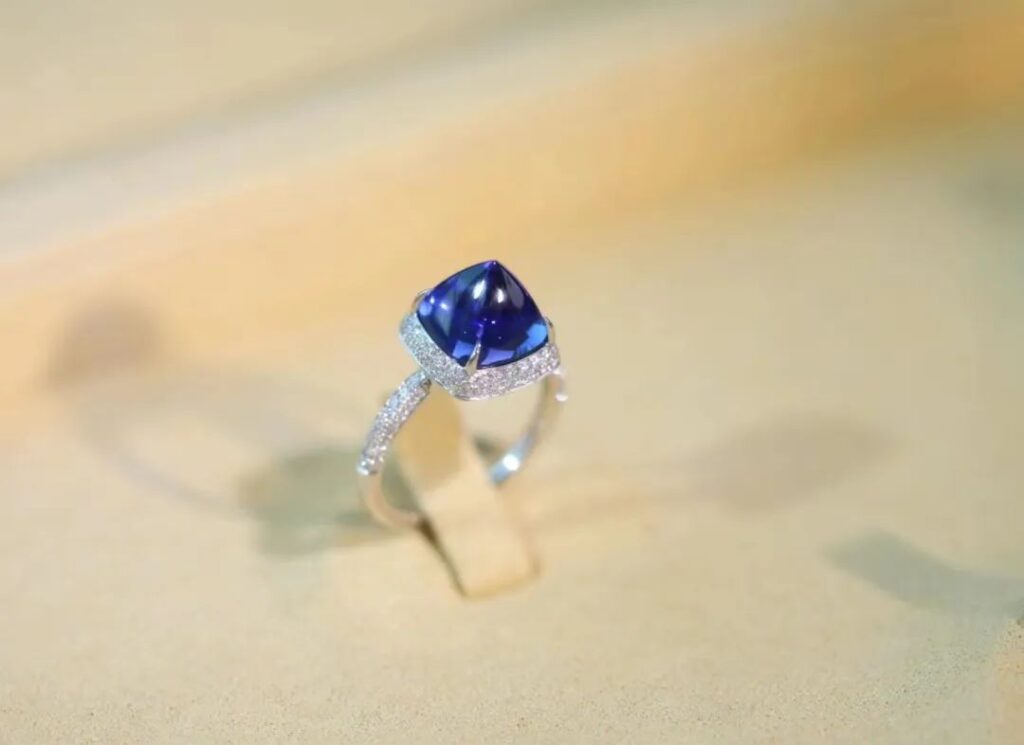
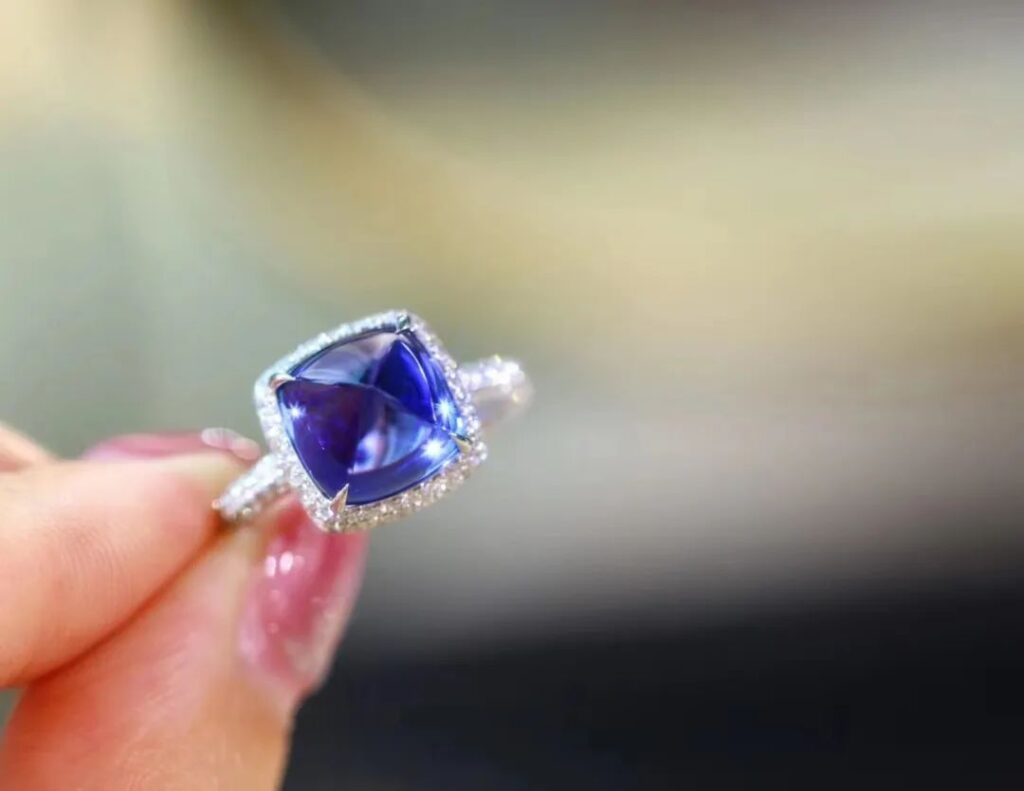
This captivating gemstone exhibits strong pleochroism, allowing it to display multiple alluring colors simultaneously. From one angle, it appears as mysterious as a violet; from another, it presents a noble and bright blue, constantly shifting and changing.

Currently, tanzanite is only found in a mere 20 square kilometers at the foot of Mount Kilimanjaro, facing the constant threat of depletion.
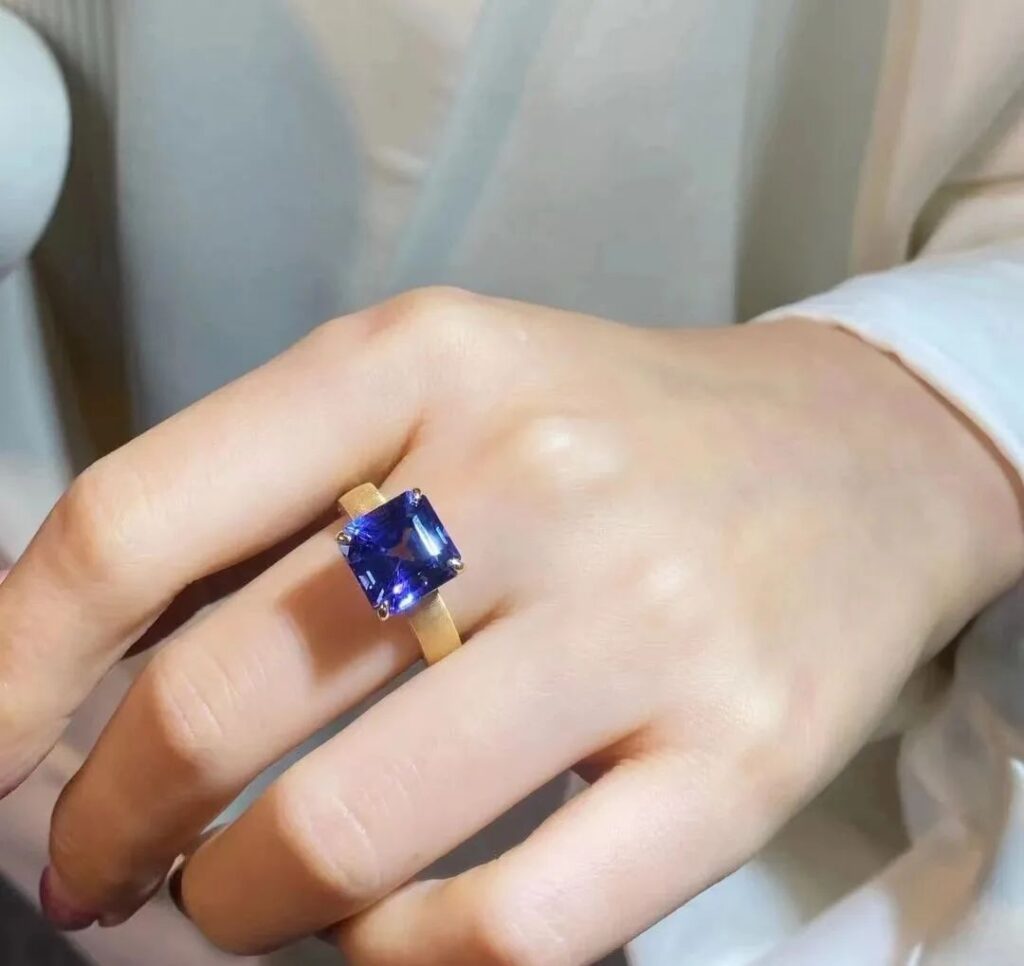
High-quality tanzanite commands prices of four digits or more per carat.
Tourmaline
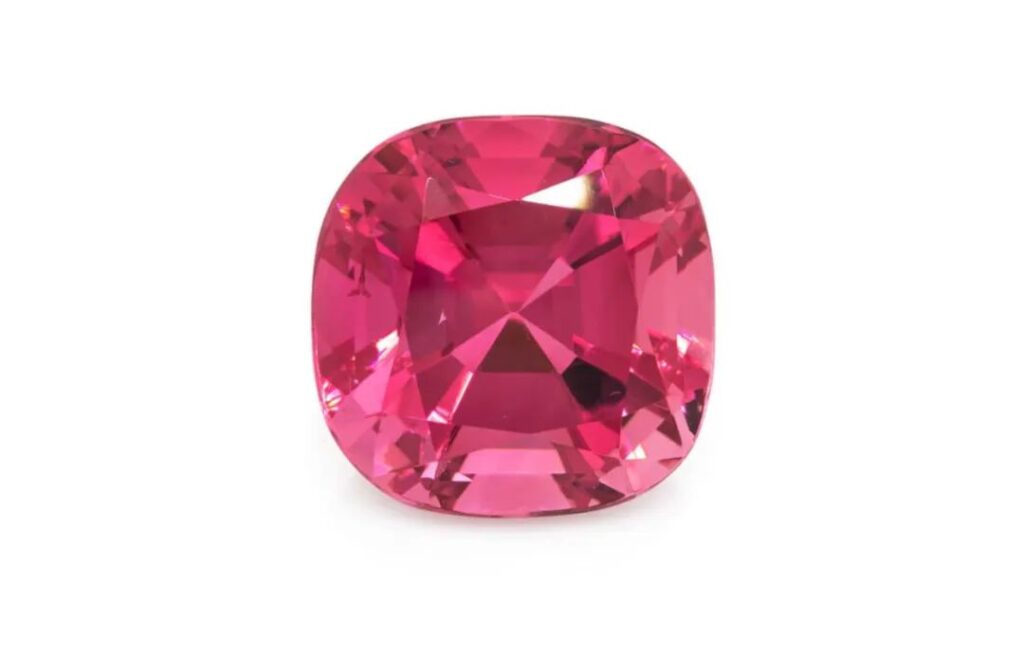
Fashion-forward jewelry enthusiasts, if you were to look through your jewelry boxes, most of you would likely find a tourmaline or two!
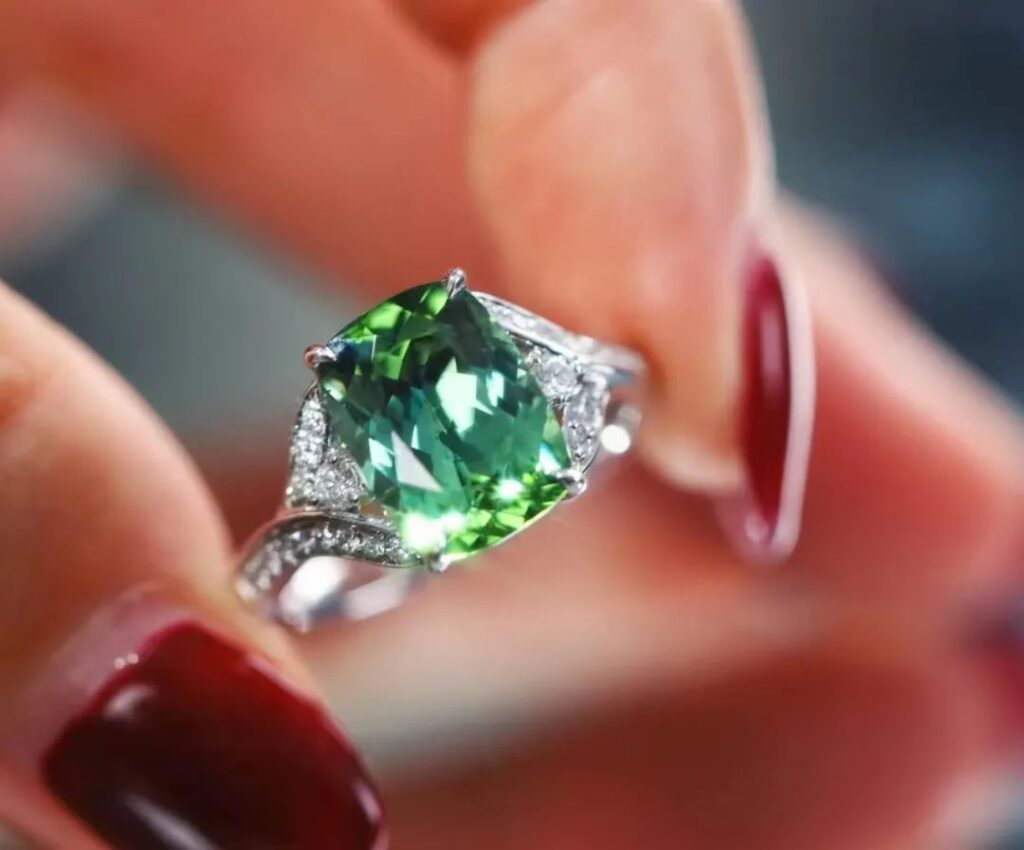
According to ancient Egyptian legend, tourmaline rose from the earth’s core, passing through a rainbow and absorbing all its colors. This resulted in its rich and varied hues, earning it the nickname “the rainbow scattered on earth by the heavens.” Additionally, its Chinese name sounds similar to “ward off evil,” making it particularly popular among Chinese people.
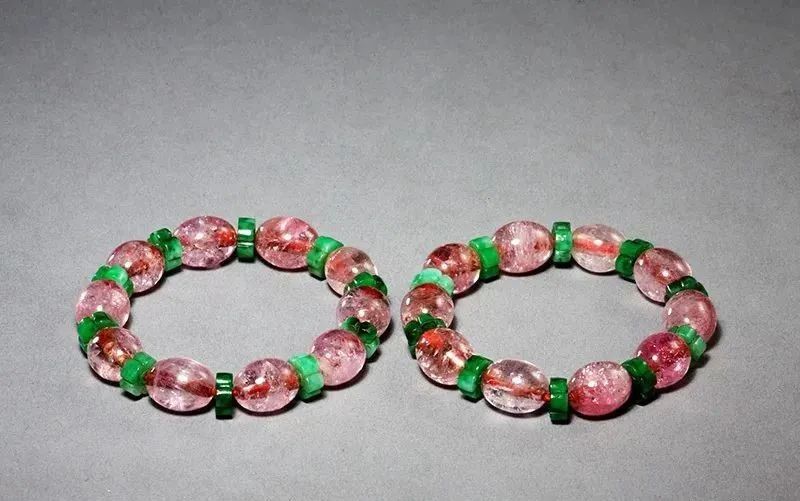
During the Qing Dynasty, tourmaline, like rubies and sapphires, was a symbol of power and one of the materials used for the hat ornaments and court beads of first and second-rank officials. The Empress Dowager Cixi, known for her extensive jewelry collection, was reportedly a super fan of tourmaline, single-handedly reviving the American tourmaline mines with her passion.

In recent years, the most notable tourmalines have been the sea-blue Paraiba tourmaline and tourmalines from Afghanistan.
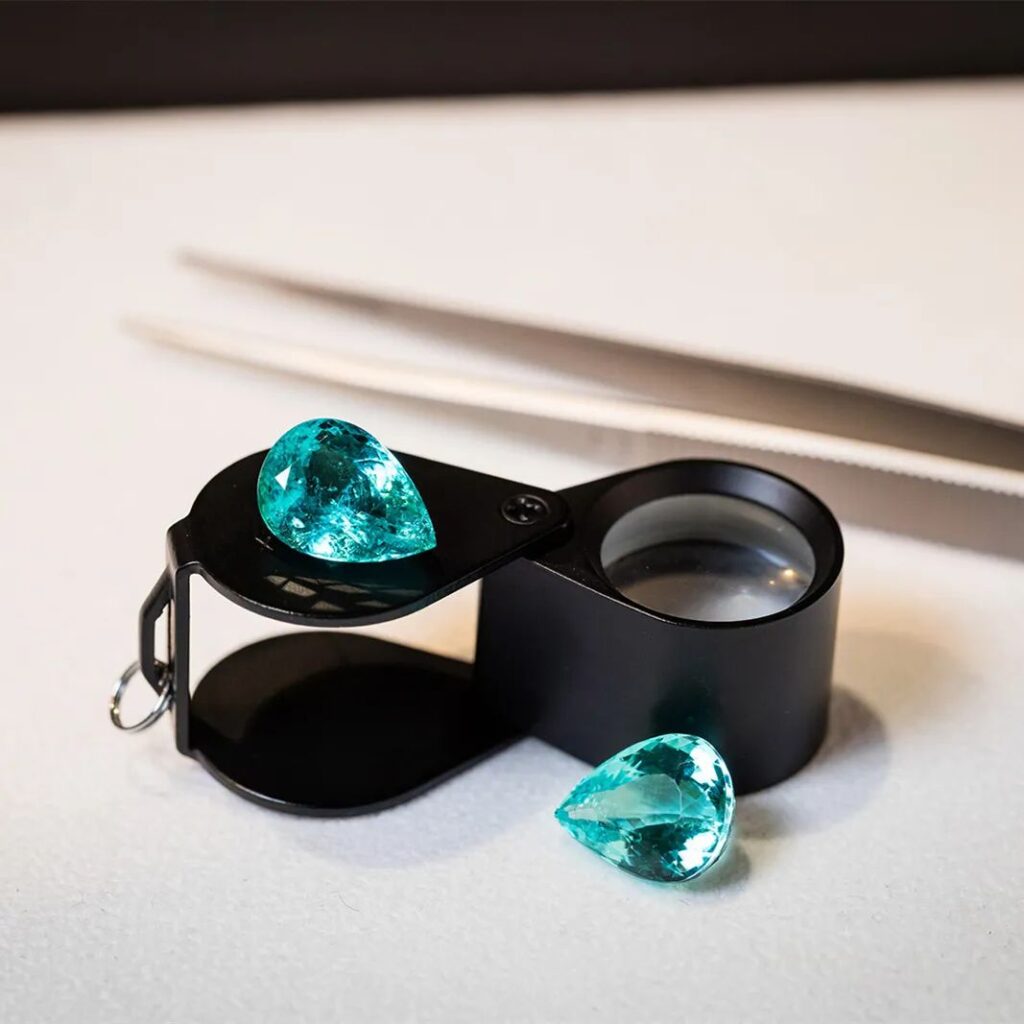
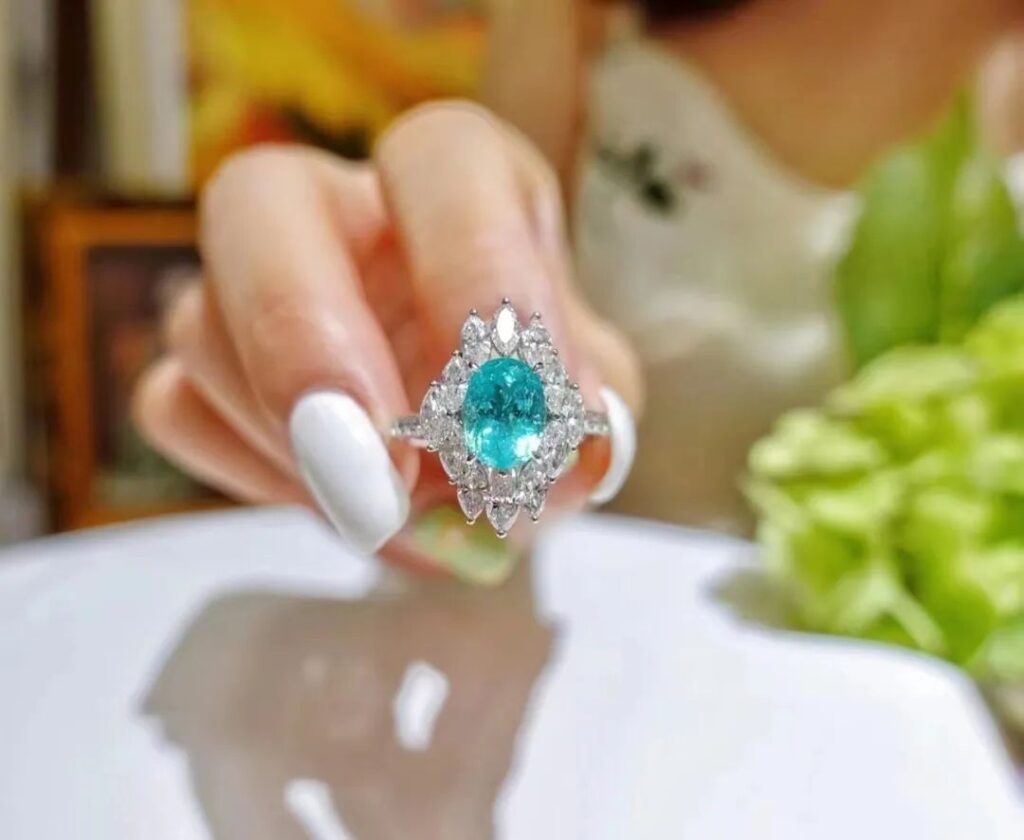
Paraiba tourmaline originally referred to stones from Paraíba, Brazil, but those mines are now depleted and stones are nearly priceless. Today’s Paraiba tourmalines mostly come from Mozambique and Nigeria, with high-quality stones starting at five-digit prices per carat.
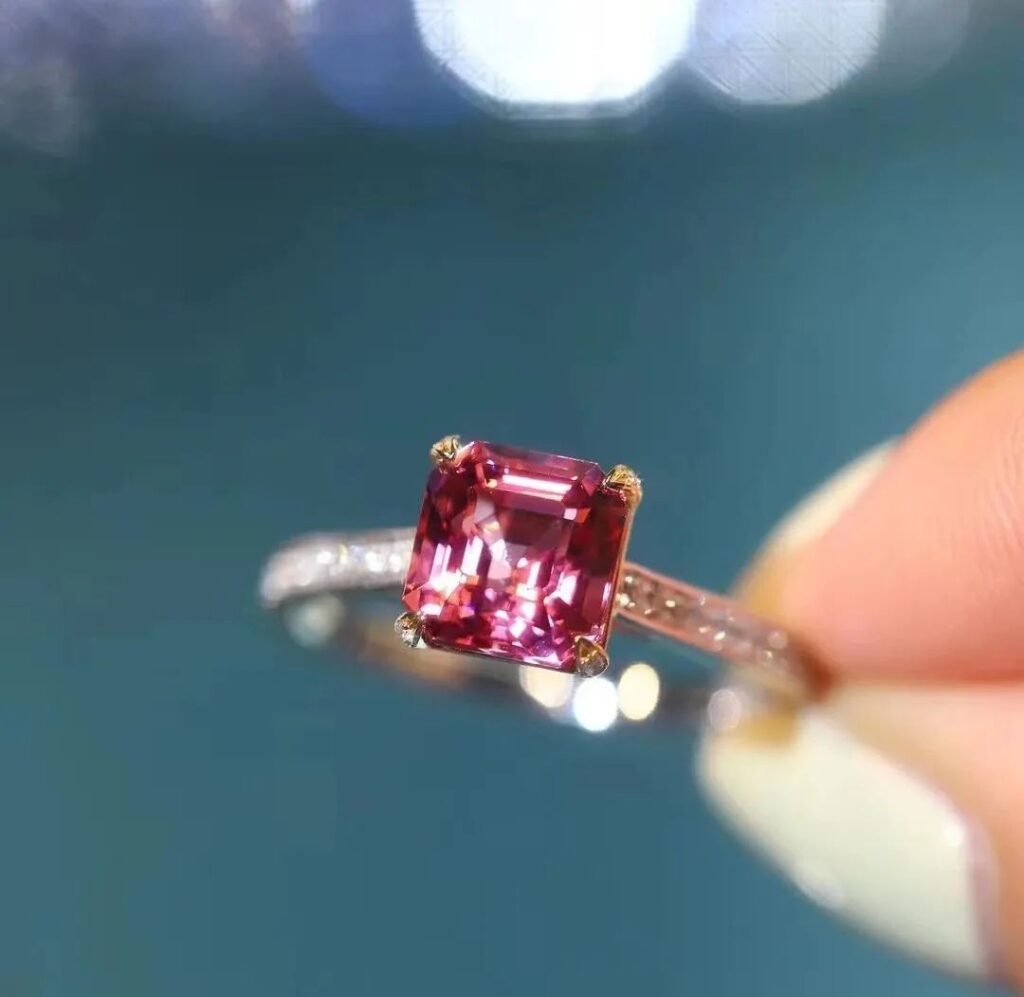

Afghan tourmaline has emerged as a rising star in recent years, known for its clean, bright, and transparent crystals. High-quality stones start at four-digit prices per carat.
Conch Pearl
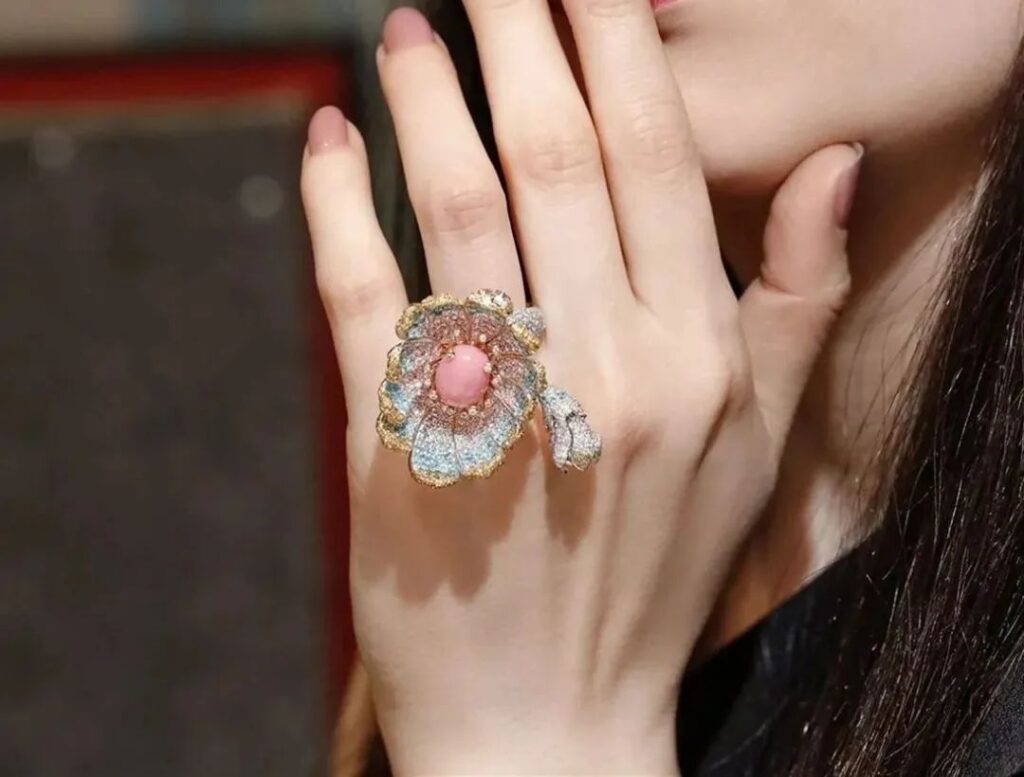
If fashion enthusiasts pay attention to high-end jewelry collections from major brands, they’ll often spot a bright pink presence. These pearls, with flame-like patterns reminiscent of intense mountain fires and colors ranging from light rose pink to bright pink, are called conch pearls.

Conch pearls are produced by the queen conch, a rare species that’s almost impossible to cultivate artificially. They primarily grow in the waters of the Caribbean, Bahamas, and Bermuda, typically at depths of around 30 meters. The already limited production makes gem-quality conch pearls of substantial size as rare as stars in the sky.
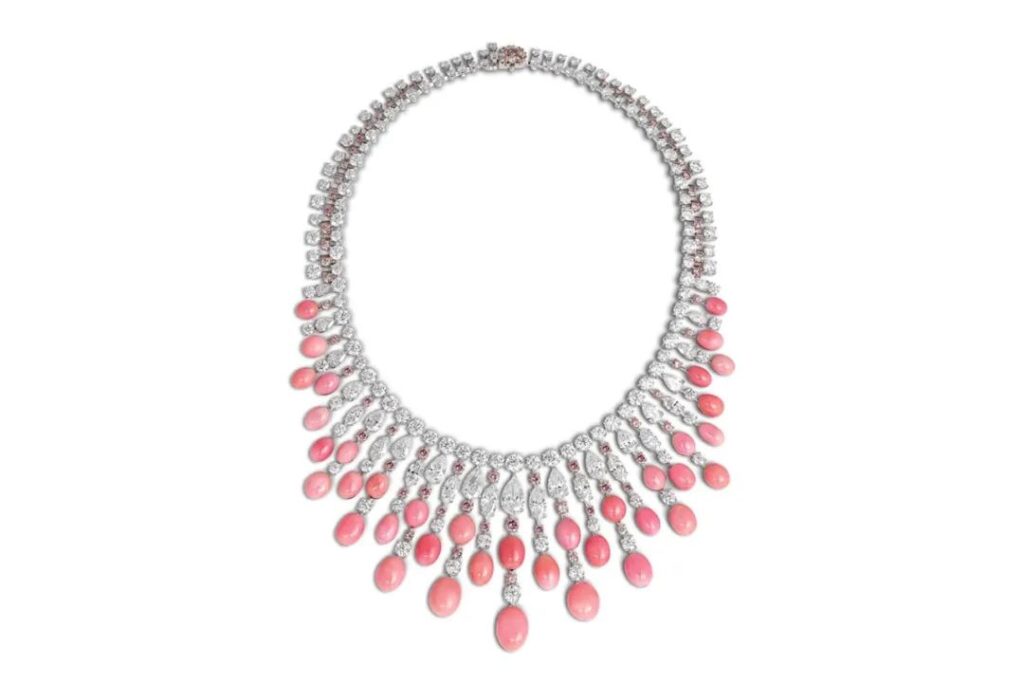
Natural, beautiful, and scarce, conch pearls command high prices, earning them the nickname “the Hermès of pearls.” They’re rarely seen in everyday life and typically only appear in custom jewelry pieces.
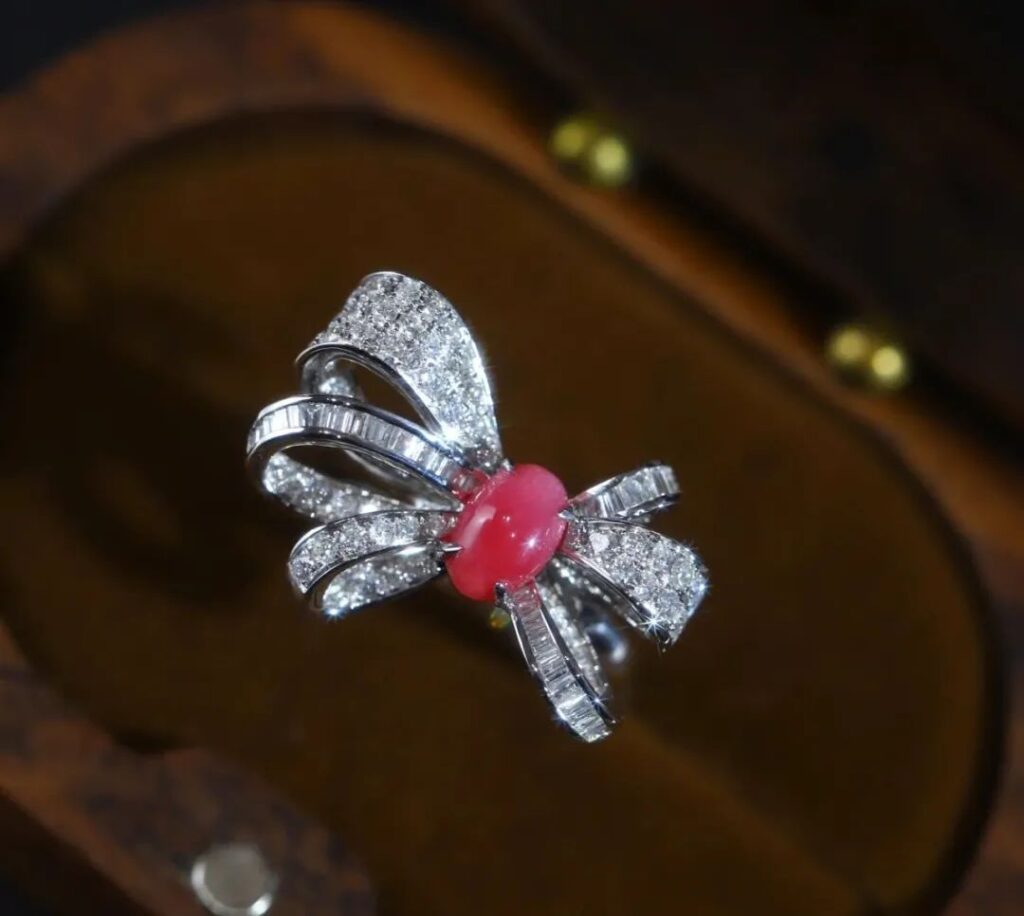
High-quality conch pearls start at five-digit prices per carat.Which gemstone “nouveau riche” do you have in your jewelry box, fashion enthusiasts? Feel free to share in the comments section!
Rising Stars: The New Gemstone Aristocrats Taking the Jewelry World by Storm
Tweet





